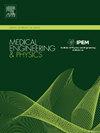A multiparameter comparative approach to the three-dimensional numerical analysis of the hemodynamics of total cavopulmonary connection
IF 1.7
4区 医学
Q3 ENGINEERING, BIOMEDICAL
引用次数: 0
Abstract
Purpose
Univentricular congenital heart diseases represent a significant challenge in cardiology, requiring a complex staged treatment protocol involving total cavopulmonary connection via the Fontan procedure. The application of advanced numerical methods has proved fundamental to understanding post-surgical behavior, allowing the multidisciplinary team to design more efficient and physiologically realistic anatomies. However, the definition of boundary conditions to represent fluid behavior in anatomical changes following total cavopulmonary connection is still an emerging field, frequently relying on estimates and simplifications. This study aimed to identify an effective set of variables for simplifying the analysis of hemodynamic behavior in total cavopulmonary connection and reducing the requirement for extensive computational resources.
Methods
A multiparameter comparative analysis of simulations was performed by using several variables under rest conditions for specific Fontan configurations, accounting for factors such as turbulent versus laminar flow, Newtonian versus non-Newtonian fluid, and rigid versus flexible vascular walls.
Results
Two sets of variables were found to provide the best results: (i) Newtonian fluid behavior, turbulent flow, steady regime, and rigid walls were found suitable when the distribution of blood flow to the pulmonary arteries is the desired result and (ii) Newtonian fluid behavior, turbulent flow, transient regime, and rigid walls were found suitable when the distribution of blood flow to pulmonary arteries, shear stress, and energy loss are equally important.
Conclusion
The identified sets of variables provide a solid foundation for future analyses, ensuring reliable results and an efficient use of computational resources.
求助全文
约1分钟内获得全文
求助全文
来源期刊

Medical Engineering & Physics
工程技术-工程:生物医学
CiteScore
4.30
自引率
4.50%
发文量
172
审稿时长
3.0 months
期刊介绍:
Medical Engineering & Physics provides a forum for the publication of the latest developments in biomedical engineering, and reflects the essential multidisciplinary nature of the subject. The journal publishes in-depth critical reviews, scientific papers and technical notes. Our focus encompasses the application of the basic principles of physics and engineering to the development of medical devices and technology, with the ultimate aim of producing improvements in the quality of health care.Topics covered include biomechanics, biomaterials, mechanobiology, rehabilitation engineering, biomedical signal processing and medical device development. Medical Engineering & Physics aims to keep both engineers and clinicians abreast of the latest applications of technology to health care.
 求助内容:
求助内容: 应助结果提醒方式:
应助结果提醒方式:


